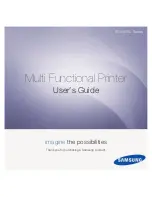
9 - 42
Viewing documents
Embedding an object in a Viewer document
Viewer allows you to insert information into your documents via a
process called Object Linking and Embedding (also known as
OLE). Essentially, OLE is simply pasting information created in
other applications into your Viewer documents. The information you
paste is called an object. You can insert these objects with two
enhancements -- linking and embedding. Image files containing
embedded or linked objects can be saved only as ALA files.
Embedding an object is simply inserting information into Viewer that
was created in a compatible Windows application, also referred to as
the “source” application. The source application must be capable of
providing the information in a graphic format that Viewer supports.
Once embedded, the object becomes a part of the Viewer image.
When you double click on the embedded object, you open the source
application. The object is displayed and ready to be edited. When you
return to Viewer, the image will reflect any changes you've made to
the object.
Linking embedded objects actually creates a “tie” between the
inserted object itself and its source application. Once you have
established this link, any changes you make to the object in its source
application will also be reflected in the Viewer document. Viewer
does not need to be running when you manipulate the object. Once
you do open the Viewer document, the object is updated with your
changes.
Embedding objects
Embedding is simply inserting a chunk of information (also known as
an object) into your image. This information can take a variety of
forms -- from text to graphics. Once embedded, this information
becomes part of the image. If you embed a multiple page document,
only the first page of the document will actually become part of your
image.
09_viewer.p65
12/15/98, 2:48 PM
42
















































